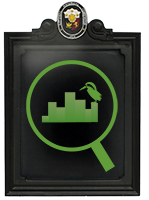 Cathedral of Saint William of Laoag | Church of Laoag Marker
Cathedral of Saint William of Laoag | Church of Laoag MarkerCathedral of Saint William of Laoag | Church of Laoag Marker is a Marked Structure, NHCP; Local Cultural Property - Cultural and Historical Heritage of the Province of Ilocos Norte (per Provincial Ordinance Nos. 049-2006 and 039-2009); Registered Property, Province of Ilocos Norte located at Laoag City, Ilocos Norte, Region I.
Marker Text:
Church of Laoag
Chapel of wood and thatch built on this site when the Augustinian friars founded the parish, 1580. Replaced by this church of Italian Renaissance; foundation laid, 1612. Looted by the Chieftain Almazan who took possession of Virgin Mary's crown and proclaimed himself king, 1661. Damaged by fire, 1843; Repaired by Obras Publicas under Engineer Antonio de la Camara and Fray Santiago Muniz, 1873-1880. Occupied by Revolutionists, 1898; by American forces, 1899. Ownership contested by Aglipayans, 1901. Scene of Diocesan Marian Congress, 1932 and 1949.
Year Unveiled: 1950
____
The Baroque style is said to be concerned with the unexpected. This facet is clearly seen in the facade of the church. There is a superficial feeling of chaos marked off by an apparently illogical arrangement of elements. There are too many features and a lack of integration between levels. There is discontinuity between lines and patterns resulting in a "bold and vibrant approach at massing," which is another way of looking at this bedazzling facade. It is this curious juxtaposition in contradiction that, in a manner of speaking, gives the structure its own "humor."
The main arched entrance is flanked by massive engaged columns "applied tight against the wall, without pediments," topped by pseudo-Corinthian capitals composed of rosettes and acanthus flowers and crowned by urn-like finials of a very primitve form. Rising from the architrave, five sets of mini-columns with Doric capitals decorate the choir loft level, echoing the ones in the lower one. The columns of each story follow their own pattern and do not reach the next level but end abruptly, somewhat lower than expected if one were to follow the canons of architecture. (Angels in Stone: Augustinian Churches in the Philippines by Pedro G. Galende)